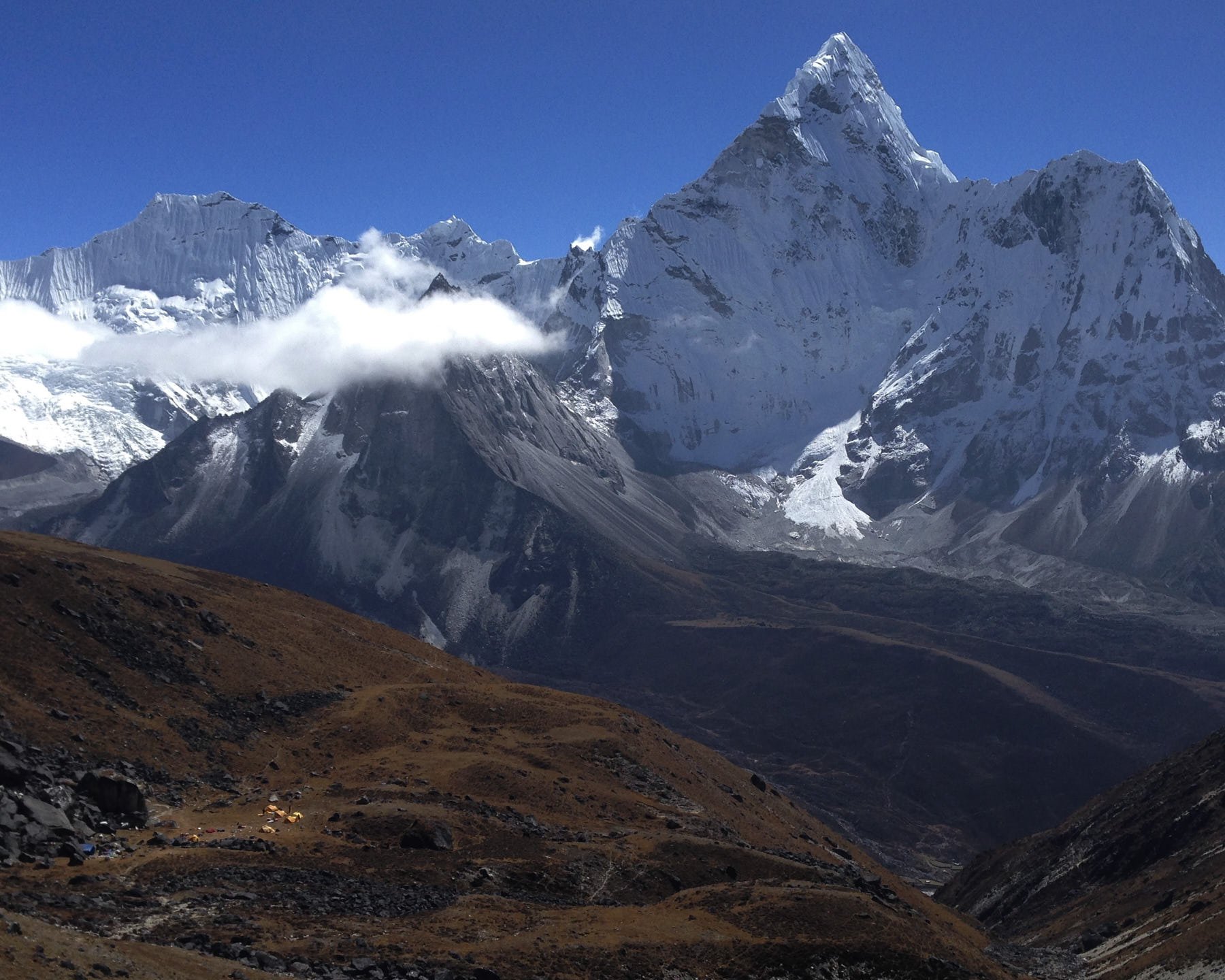Guide to climbing Pokalde Peak – Nepal
A SIDE QUEST ON THE EVEREST BASECAMP TRAIL
Read time 5 mins
The photograph above was taken at dawn from the summit of Pokalde – a mountain that most trekkers pass by on their way to Everest Basecamp. While this 5800m peak is small in stature compared to the gleaming pyramid of Ama Dablam, just across the valley, it is a straightforward ascent and has stupendous views over the Khumbu Valley and surrounding peaks.
Pokalde is one of the easiest ‘trekking peaks’ in Nepal, and is climbable by anyone with basic mountaineering skills with a guide. Time your ascent well and you will arrive on the summit at dawn to witness sunrise over entire Khumbu Valley, a view that is usually reserved for mountaineers on more difficult peaks. It is perfect for those who want to experience the thrill of climbing a Himalayan mountain without the extreme altitude or danger of an expedition peak.
I climbed Pokalde as a warm up for an ascent of Island Peak in 2018, and think it would make an exciting side trip to the Everest Basecamp trek.
PRACTICALITIES
Pokalde poses few technical difficulties, but should be approached seriously. The majority of the 650 metres climb from base camp requires little more than walking with short sections of scrambling up rock. The climb should be led by Sherpas who are experienced in laying the short fixed ropes for the top section, just before the summit.
Pokalde can be climbed in three days and two nights from the valley, with the ascent and descent taking place on the same route. Most people climb the north ridge from a base camp above the Kongma La (pass), which overlooks Ama Dablam and the busy paths leading to Everest Base Camp.
Equipment
You will need to bring (or hire) extra equipment to climb Pokalde: a tent, warm sleeping mat, mountaineering boots, warm gloves, helmet, an extra warm sleeping bag and an extra warm down duvet jacket for camping at a higher altitude. You may also need ice axe and crampons, depending on the season and conditions on the mountain.
When to go
The best time to climb Pokalde Peak is between April and May, or between September and October. These months provide mild temperatures with perfect weather for a good chance of summiting and a clear view from the top.
How to go
NOTE: New rules in Nepal dictate that all trekkers need to use Sherpa support.
–Book your sherpa guide independently through Sherpahire (or a similar service)
–book onto a group tour organised from your country of origin or using a Nepalese company. A quick google will bring up numerous companies.
Pokalde Peak Climbing Permits
Pokalde Peak with Everest Base Camp lies within the Sagarmatha National Park, which is a protected area therefore trekkers and climbers need to obtain the following permits.
– Nepal Mountaineering Association (NMA) Permit
– Sagarmatha National Park Entrance Permit
– Local Permit (Khumbu Pasang Lhamu Rural Municipality Entrance Permit)
Permits are usually organised by your sherpa or trekking company
An important note about altitude
The Himalayas begin where other mountain ranges leave off. Pokalde, at 5800m, is higher than Everest Base Camp, and higher than any peak in Europe, yet seems small when compared to the 7000m and 8000m peaks that surround it.
Your body can adjust to Himalayan altitudes, but only if given enough time. Being in a hurry in the mountains of Nepal can be deadly. The hallmark of Acute Mountain Sickness is a headache, with other symptoms including nausea, vomiting, loss of appetite, fatigue/malaise, sleep disturbance, and lightheadedness. All that is required to ensure a safe trek is a basic awareness of AMS, and a willingness to rest or descend if symptoms worsen. I experienced AMS while climbing Island Peak and descended to the village of Dingboche in the valley, where I felt better.
Further medical information on altitude sickness and how to avoid and treat it can be found on the NHS website
You may also like









HIKING TO CAPE WRATH